
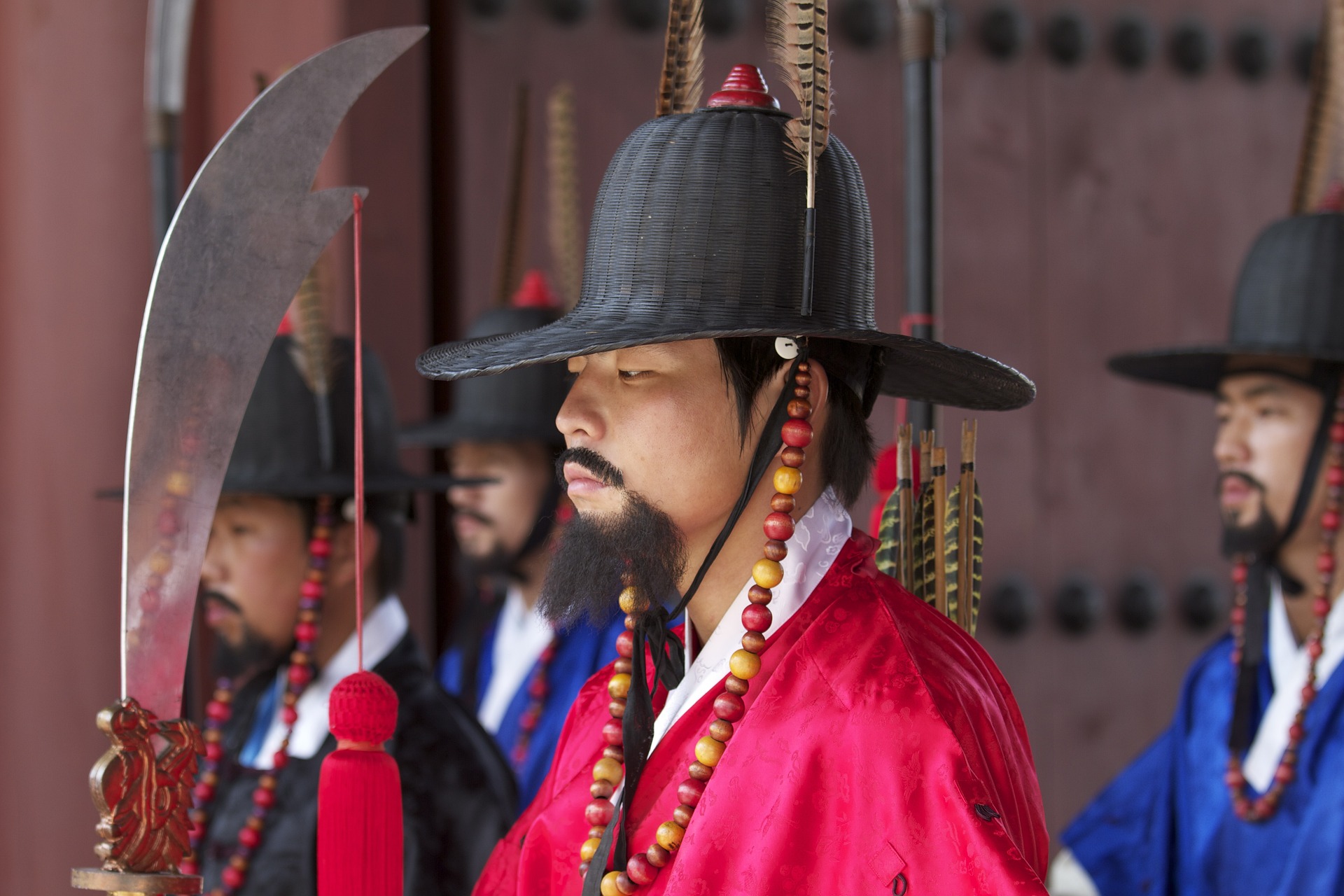
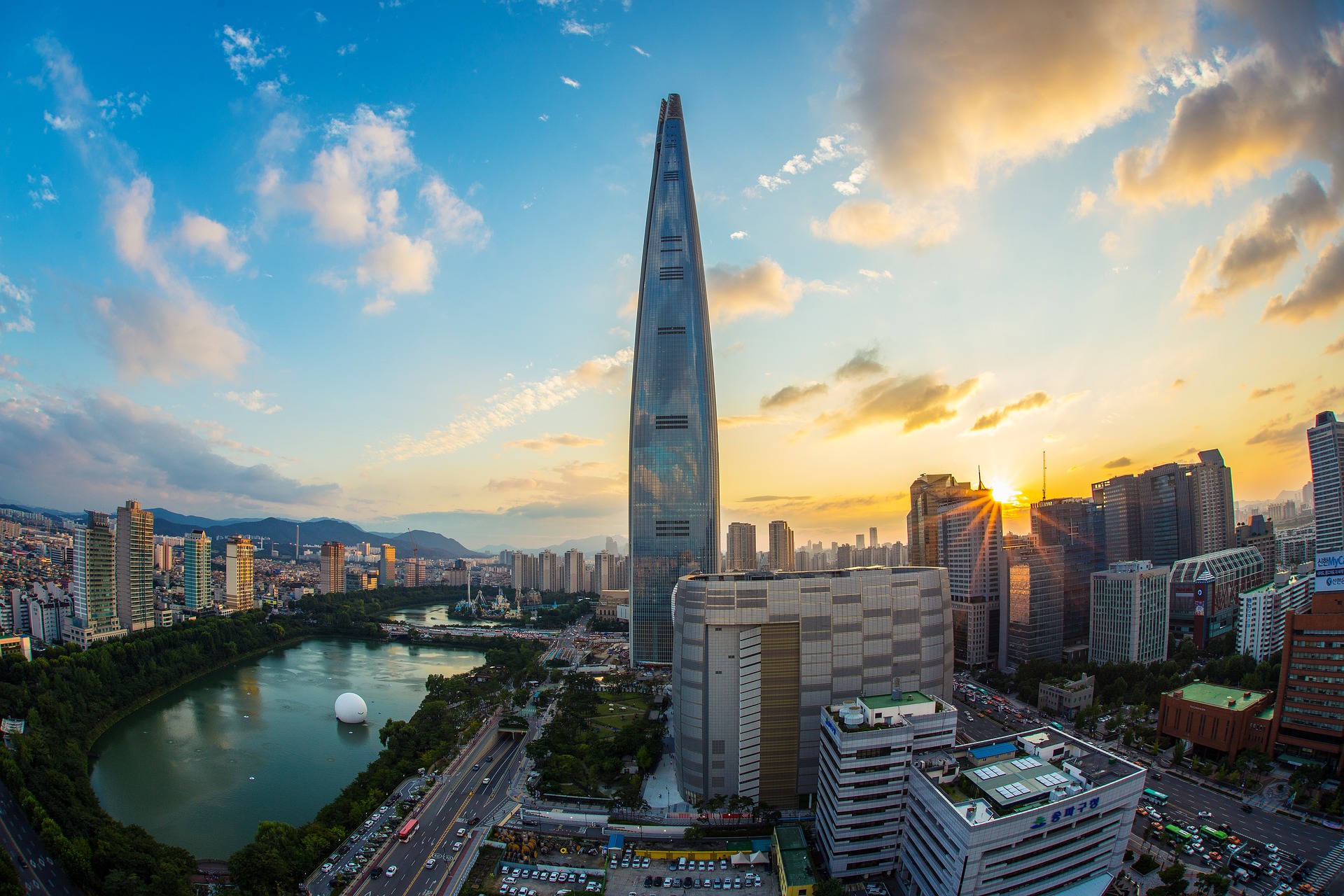

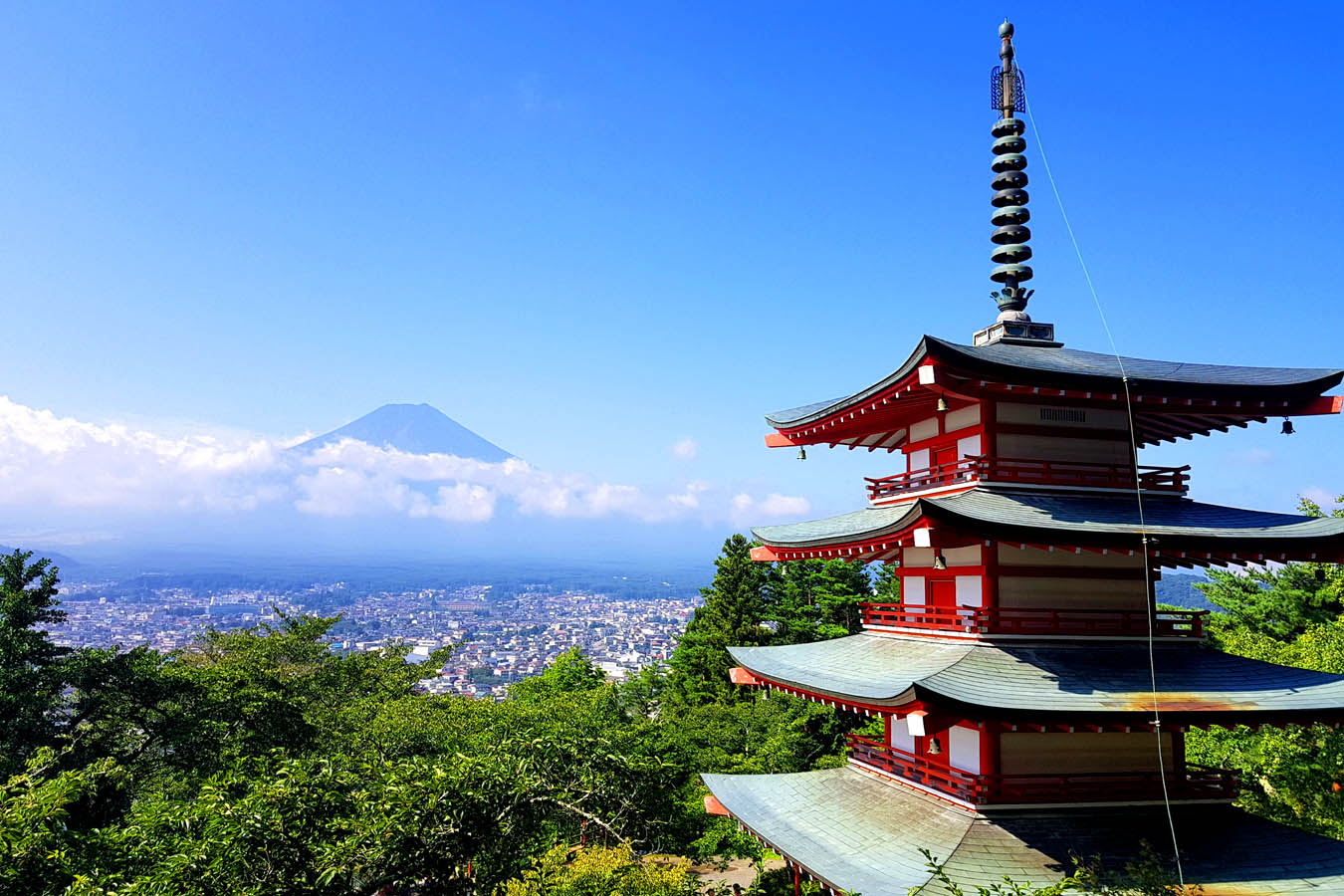
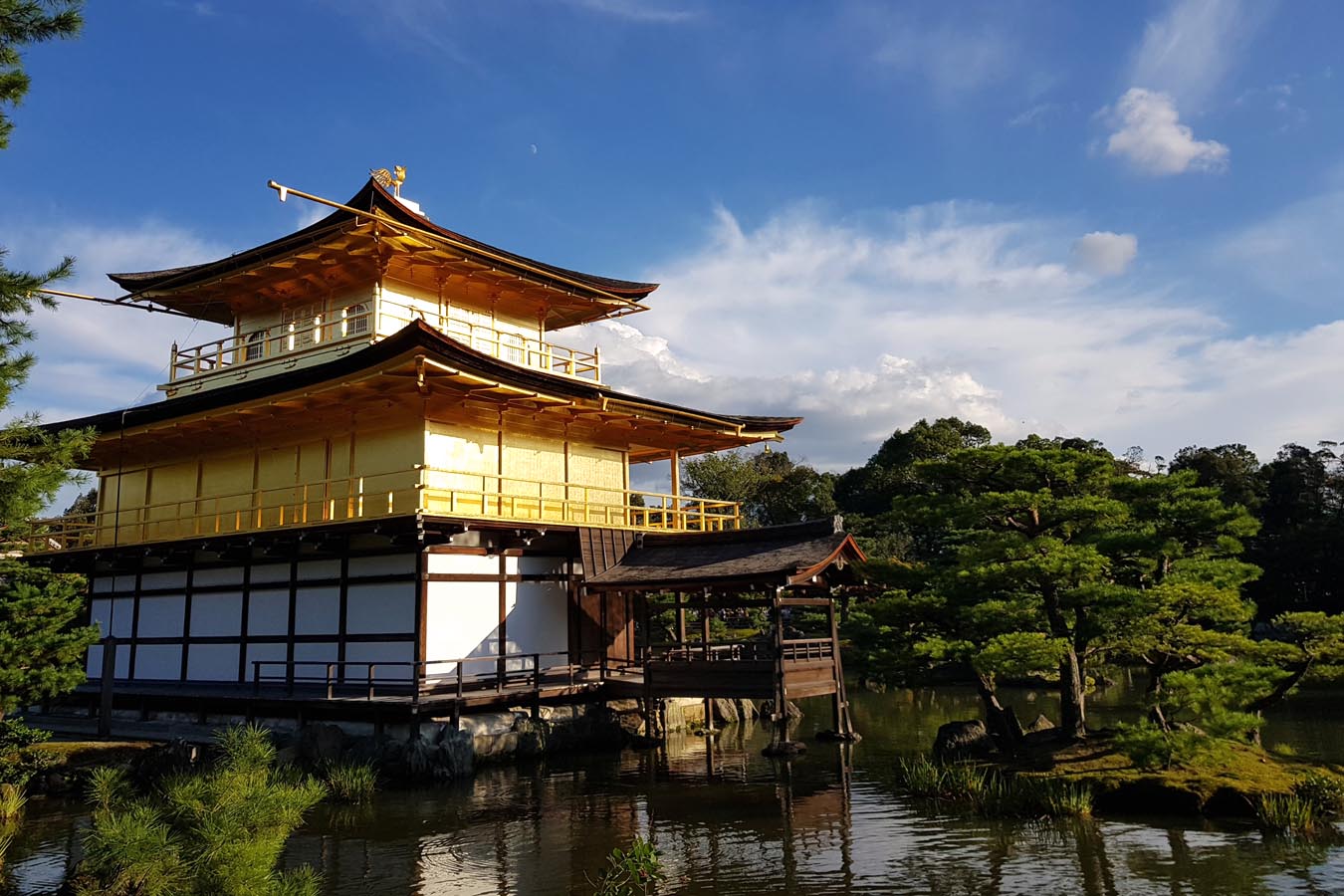
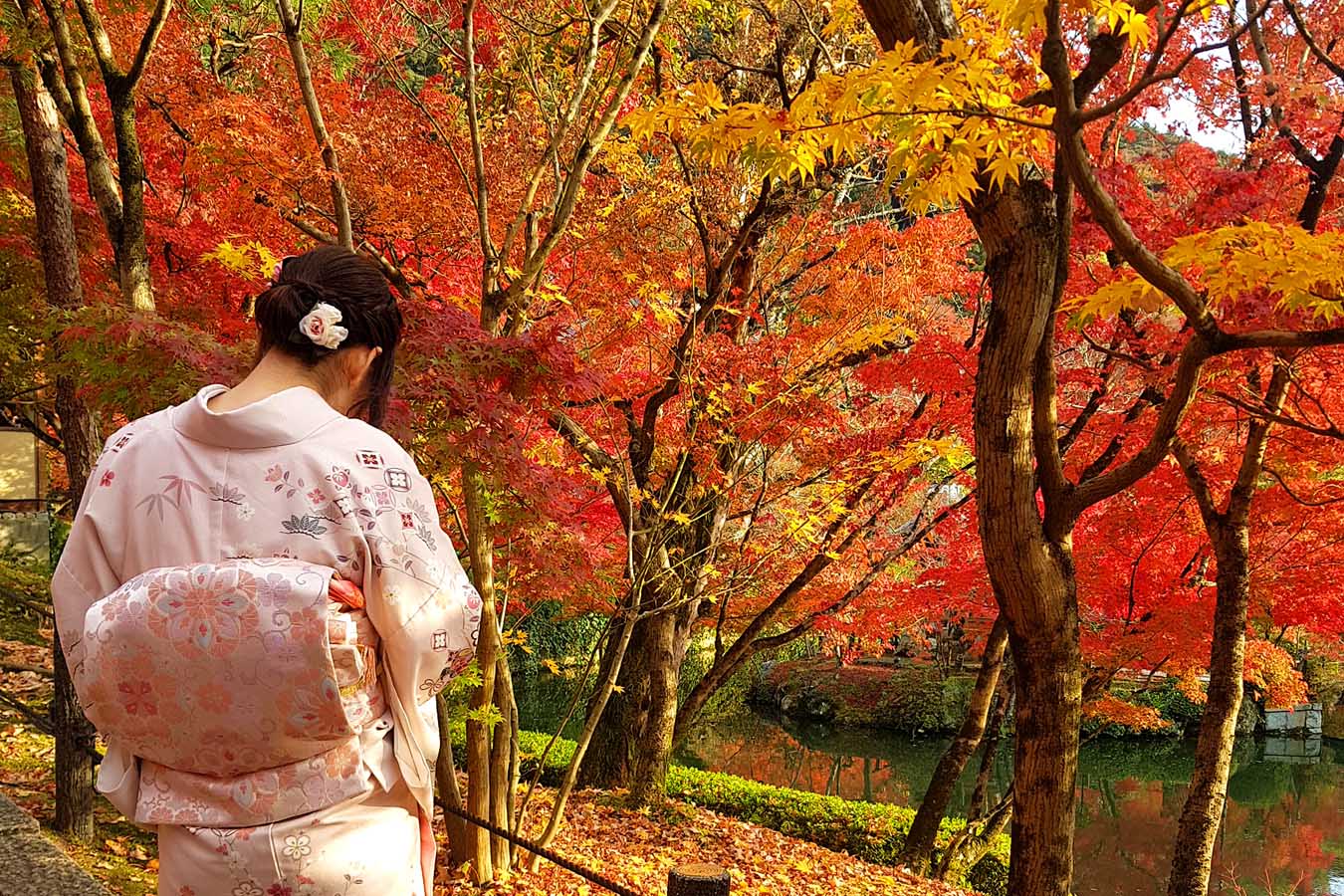
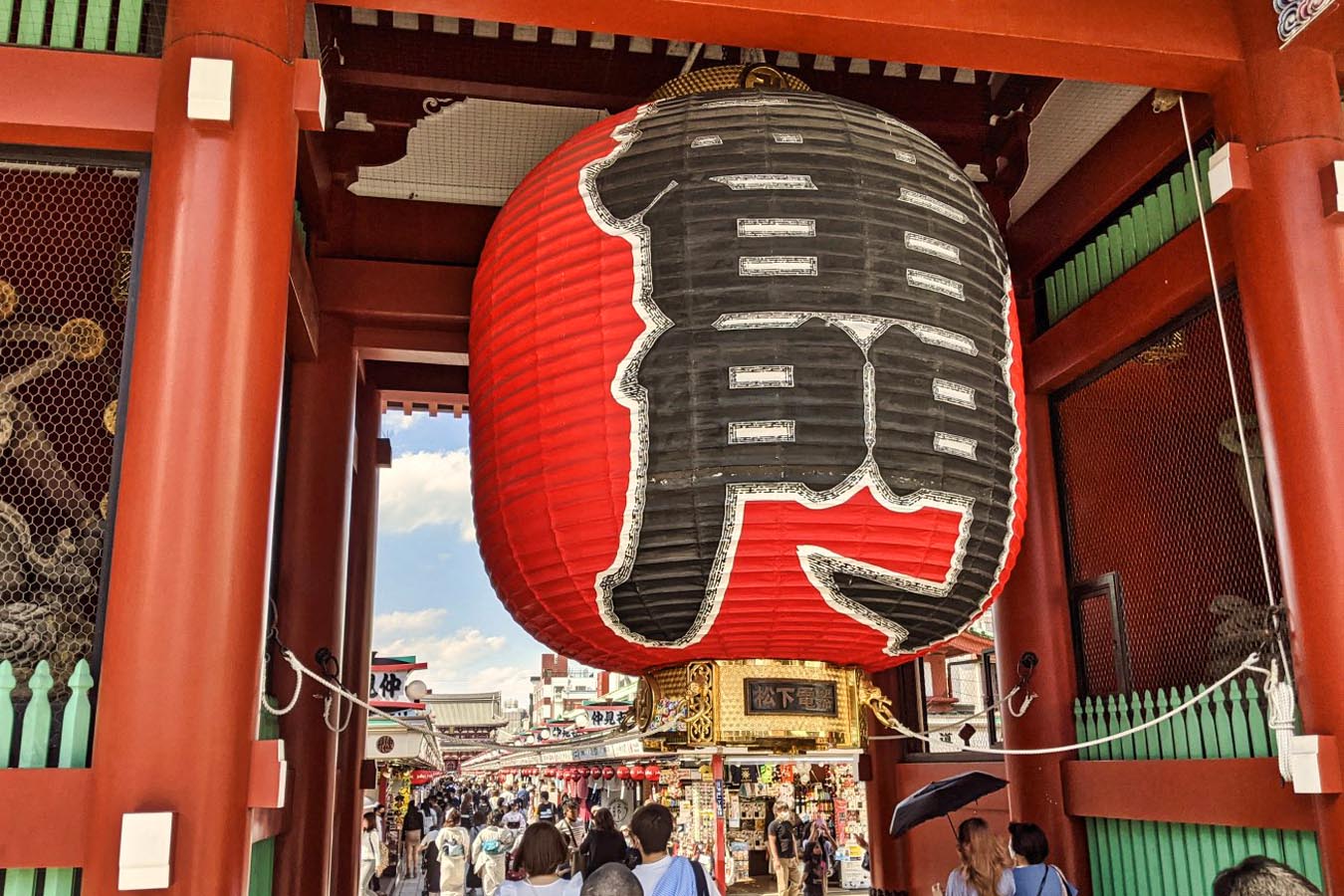
Whether Panasonic and Samsung, Toyota and Kia or kimchi and sushi: whether technically or culinary, the tiger state of South Korea and Japan are also a household name in Germany. This trip takes you to the classic highlights of these two fascinating boom nations without sacrificing comfort and extraordinary experiences. Besides the great sights between Seoul and Tokyo, you will also experience different facets of country life and the popular culture of the two countries that is known to all.
Highlights:
Detailed prices on request
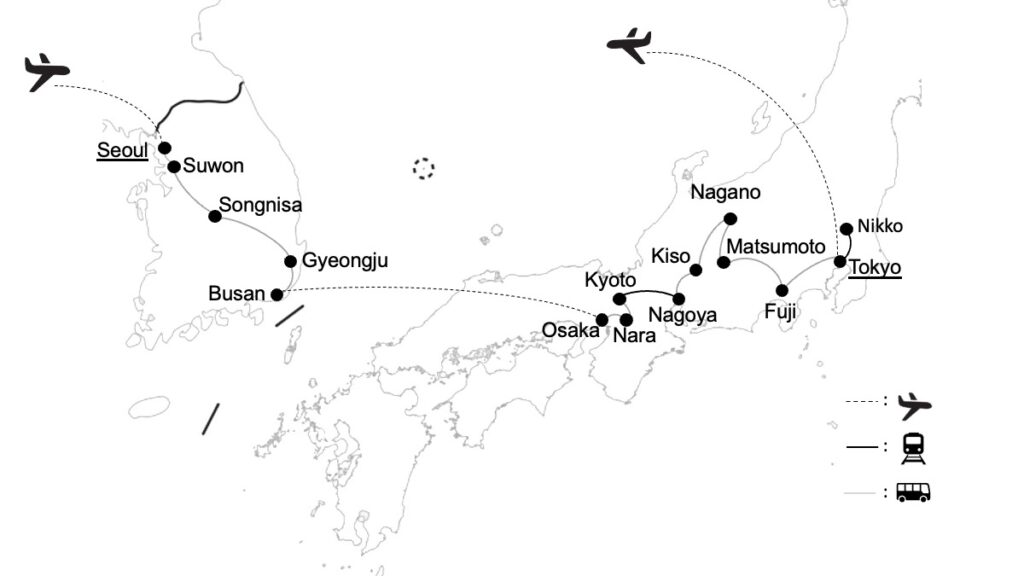
Seoul skyline
Overnight flight from Germany to Seoul.
Upon arrival at Seoul airport, you will be welcomed by your German-speaking tour guide. After arrival at your hotel, you will go on a first walk to get first impressions of the capital. We also invite you to a first Korean dinner, where you will also meet your tour group.
Gyeongbokgung Palace Complex in Seoul
Seoul is the largest and most bustling city in South Korea, with a population gradually exceeding 9.4 million. You will visit the opulently decorated buildings of the royal palace Gyeongbokgung and its beautiful gardens and learn more about Korea's royal past. Today, however, the boomtown is more famous for K-pop, popular culture and fashion, which you will examine in the Myeongdong district. In the late afternoon, you will make a detour to the Korean War Memorial to learn more about the "fratricidal war" and why Korea is still divided into North and South Korea today. In the evening, after a short detour to Gangnam (who doesn't know it, the "Gangnam Style"), take a look at the City of Lights from the Lotte World Tower. From a height of 500 meters you have a breathtaking view!
Songnisa Nationa Park
Today we leave Seoul and visit the historic city fortress Hwaseong in Suwon. First built at the end of the 18th century, the extensive defense complex with its more than 44 buildings is one of the most impressive UNESCO World Heritage Sites in Korea. From here, the tour continues to Songnisan National Park. Translated, the name means "removed from the normal world," as this remote mountain region served as a retreat for Buddhist monks as early as the early Middle Ages. You will therefore proceed to the Beopjusa Temple, which with its unique temple architecture looks back on a history of more than 1400 years. During a walk around the complex, you will enjoy the sight of the lush nature of the national park. Overnight at the hotel in the small town of Daegu. (Driving time approx. 4.5 h, 350 km; walking time approx. 3h, 150 m↑↓, 10 km).
Wolji pond with Gyeongju palace
In the morning you will continue by group bus to the picturesque Yangdong Open Air Museum, which is part of the UNESCO World Heritage Site of Korea. Here you will get an insight into traditional village life and an idea of how people still live in traditional houses today.
A highlight of the trip is today's destination, the city of Gyeongju. Called the "golden city" or "museum without walls," there are countless historical sites of the ancient Silla Empire () waiting to be discovered. They begin with the 8th century Bulguksa Temple, which houses in one of its grottoes the illuminated Buddha in white marble among allegories of Buddhist virtues. Another highlight is the reconstructed Donggung Palace, located directly on Wolji Pond. (Travel time approx. 1.5 h, 110 km).
Season date in April: Cherry blossom at Bomun Lake in Gyeongju. There may be changes in the program if necessary.
Season date in September: Pink grassland of Cheomseongdae. There may be changes in the program if necessary.
Detail of Haedong Yonggungsa Temple
Early morning drive to the last stop of this trip in South Korea, the port city of Busan. After dropping off your luggage at the hotel, explore the wonderful port city on your own or join our optional day trip. You'll start the day exploring the lively Gamcheon Arts and Culture Village. With its iconic blue roofs and low houses, there are countless art projects to discover today. After a short tour, continue to the Jagalchi Fish Market in Busan Harbor. Here you can taste many of the local delicacies and get a good insight into what ends up on the kitchen table of Korean families. In the afternoon you will visit the Haedong Yonggungsa Temple. This is considered one of the most beautiful shrines in Korea and is located right on the cliffs of the coast with its picturesque historic buildings dating back to the 14th century. Perfect view of the sea included!
In the evening, the Bupyeong Kkangtong night market is recommended for an extended stroll to enjoy Korea to the fullest one last time. (Travel time approx. 1 h, 90 km)
Seasonal date in May: visit Samgwangsa Temple just before Buddha's birthday, which is decorated with thousands of colorful lanterns. There may be changes in the program if necessary.
Torii gates of the Fushimi Inari shrine
In the morning you will go directly to Busan airport and in less than 2 hours to Osaka in Japan. Immediately after arrival, you will board the group bus and continue to the cradle of Japanese culture, the city of Nara. Among the UNESCO World Heritage Sites, you will visit the largest wooden building in the world, Todaiji Temple, which also houses the largest cast bronze in the world, and the "Golden Hall" of Kofukuji Temple, which was rebuilt by 2018 and also boasts a five-story pagoda dating back to the 15th century. But the city is not only known for its shrines. Hand-tame but wild sika deer sometimes roam the city in packs and can also be fed. On our onward journey to Kyoto, another highlight awaits you: the Fushimi-Inari Shrine, with its thousands of red torii gates and fox statues, is one of the most important shrines in Japan and a world-famous photo motif. In fact, this is now the most visited shrine in Japan and also part of Kyoto's UNESCO World Heritage Site. You will reach Kyoto's downtown in the early evening. (Flight approx. 1.5 h; driving time approx. 2 h, 120 km).
The Kinkakuji Temple
Today the old imperial capital is waiting to be discovered by you. Following the example of the city's people, today we set out by bike. We start with probably the most famous sanctuary in Japan: the UNESCO World Heritage Site of the Kinkakuji Golden Temple. Covered in more than 20 kilos of gold, this pavilion with its stylish garden is considered the epitome of classic Japanese aesthetics. Passing through idyllic side streets, we head to Kyoto's great city garden, where we visit the old Gosho Imperial Palace with its majestic buildings and perfect gardens. We continue past Heian Shrine, ancient temples to the hills of the UNESCO World Heritage Site of Kiyomizu Temple. We enjoy the view from the wooden terrace, from which in the Middle Ages young gentlemen plunged 13 meters into the depths as a test of courage. After a short break in the picturesque temple surroundings, we return to the hotel by bike. In the evening a visit to the geisha district Gion is worthwhile! Tips from the tour guide included. (Bike tour approx. 4h, approx. 20 km). (F)
Seasonal date in October: Visit the colorful Jidai Matsuri festival procession. The program may be subject to change.
Nagoya palace interior
After breakfast, head to Kyoto's main train station. The architect Hara Hiroshi has provided it at a dizzying height with a cantilevered, geodesic glass roof that is unparalleled. Of course, a trip to Japan should not be complete without a ride on the world's most punctual mode of transportation, the Shinkansen Super Bullet Express train. The journey to Nagoya of about 150 km takes just 33 minutes. Once in Nagoya, you will visit the impressive Nagoya Castle complex. The palace in particular, with its almost baroque ornamentation, shows the splendor in which the high-ranking samurai of the Middle Ages once revelled. (Travel time approx. 0.5 h, 150 km).
Magome street
A next highlight awaits you: lush nature and picturesquely preserved villages along the Nakasendo trade route. Arriving at the historically preserved village of Tsumago, you will walk among medieval houses, rest houses, rustic temples and dense forests to Magome (about 2-3 hours). This village is also picturesquely located in a valley of the Kiso River, and because of the old building structure, you feel as if you have been transported back to the late Japanese Middle Ages. On the way to Nagano you will stop at a wasabi farm to learn all about this root, which is so important for Japan, and its elaborate care. Arrival in Nagano in the late afternoon. For those who are not yet tired, you will go on a walk through the city towards the most important sanctuary of the Japanese Alps: the Zenkoji Temple. Supposedly, the first Buddha statue is kept here, which came to Japan in the 6th century by Korean monks. Actually, it was the Koreans who converted the Japanese to Buddhism. (Driving time about 4 h, 300 km; walking time about 2.5 h, 8 km).
Bathing Japan macaques in Jigokudani
The highlight of the day awaits us in the depths of the Nakano forests: the Jigokudani Monkey Park. The wild Japanese macaque packs that live here gather daily to warm up in the hot spring pools preserved here in cold weather. Afterwards, you will continue into the depths of the Alps. You will make a stop in the charming town of Matsumoto. You will visit the 16th century castle complex and its characteristic black castle tower. Because of the color scheme it is nicknamed "Crow Castle". In the late afternoon you will reach the area of the five Fuji lakes and with a little luck you will also spot the highest mountain in Japan: Mount Fuji. This is also the holiest mountain in the country and is considered a UNESCO World Heritage Site! Afterwards, you will check in at your accommodation today, which has its own hot spring (Onsen). Take the opportunity for a typical Japanese bath. (Travel time approx. 4 h, 270 km; walking time approx. 2 h, 100 m↑↓ 8 km).
Chinatown in Yokohama
In the morning, after a short climb, visit the Chureito Pagoda and enjoy a perfect view of Mount Fuji in good visibility (weather permitting). And that with the cherry blossom also with delicate flowers in front of it. Dreamlike! You will interrupt the onward journey to Tokyo, the final destination of this trip, with a visit to the port city of Yokohama. In Korea, you've already learned all about kimchi and co. and in the port city, at the Cup Ramen Museum, you'll get to know Japan's specialty, which has also made it onto every supermarket shelf in Germany: Instant noodles. As a souvenir, you can also create an instant soup to your own taste! The city's Chinatown is also particularly culinary, and we will take a short stroll through its colorful alleys. In the early evening check-in at the centrally located hotel in Tokyo. (Travel time approx. 2.5 h, 160 km).
Night Live in Shibuya
Today, explore Tokyo on your own or join our optional day trip. We follow the example of millions of Tokyoites and start the day with a subway ride. We start with a ride to the historic district of Asakusa. Here you will visit arguably the most important temple complex in the city: the Sensoji and also enjoy the view of the tallest building in Asia, the Tokyo Sky Tree. In the afternoon we continue to the flashy district of Akihabara, where everything revolves around manga, anime, computer games and maids (girls in maid dresses). Here we also visit the "Akihabara Culture Zone" to see what art is really all about for fans in Japan. After a long subway ride, we step out of the tunnels into an almost enchanted forest of ancient trees, in the middle of which is the city's most important Shinto shrine: the Meiji Shrine. This is also where people like to get married in the classic Japanese way. Directly in front of the garden is the crazy fashion district Harajuku with the screamingly colorful shopping street Takeshitadori, where shrill Japanese fashion styles leave us amazed. A visit to the observation deck of the newly built Scramble Square skyscraper rounds out the day, as from here you can view the world's busiest intersection from a height of 230 meters. A magical experience in the sea of lights of this gigametropolis! At a follow-up dinner, visit a traditional Japanese drinking restaurant, an izakaya, and enjoy your last evening in Japan with your tour group. (F)
Return journey
Airport transfer from the hotel by bus or train and farewell from the tour guide.
Exterior of the Imperial Palace in Tokyo
Cherry blossom (March-April)
Off-season date spring (May)
Late summer (September)
Autumn (fall foliage color)
Kaiserdamm 105, 14057 Berlin
Takanoha Square 5th floor, 331 Kamiyanagicho, Shimogyo Ward, Kyoto, 600-8099 Japan
ジェイナビゲーター合同会社
〒600-8099 京都府京都市下京区上柳町331 タカノハスク エア5階